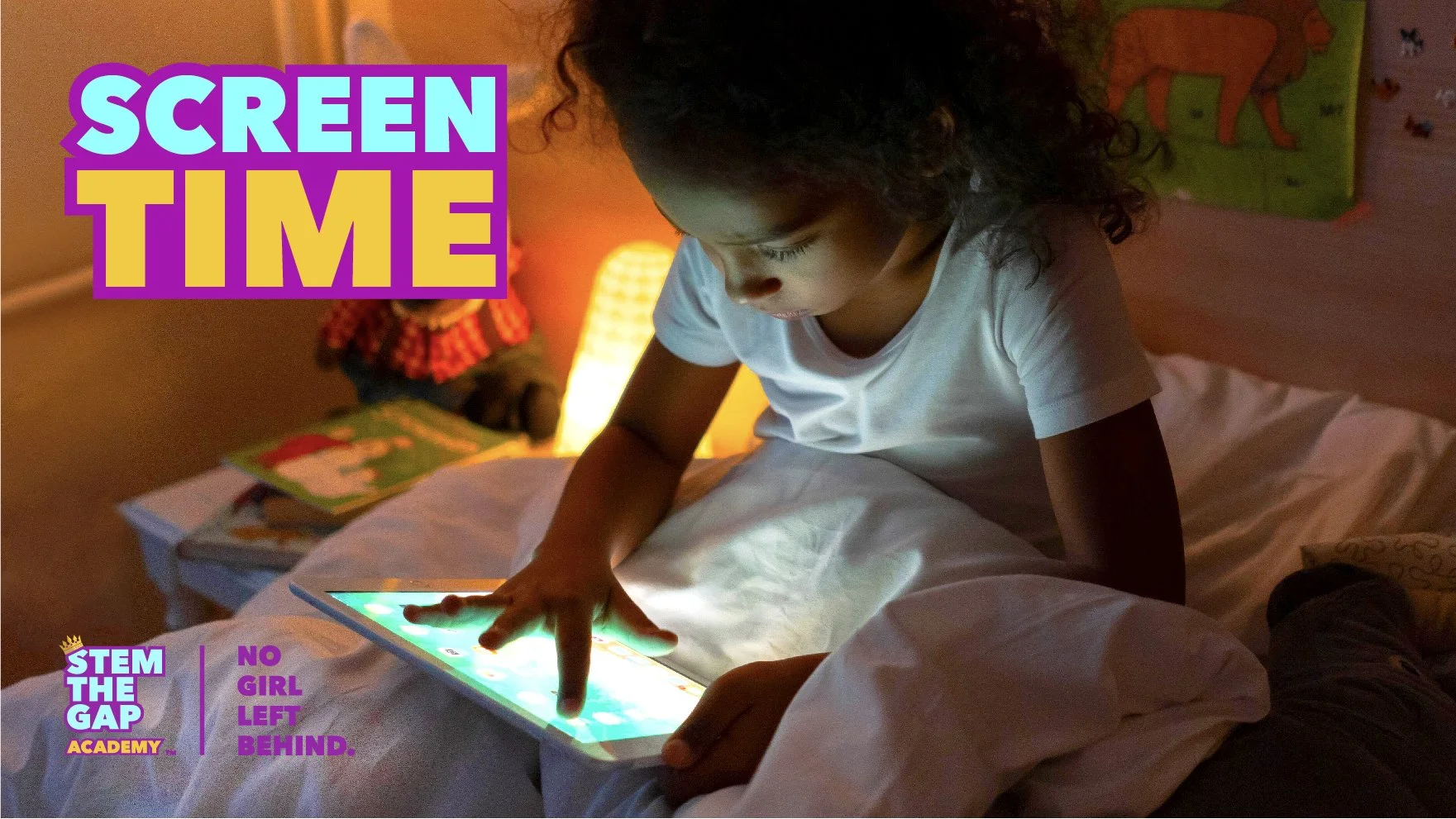SCREEN TIME
How much screen time children should be allowed is a hot topic and absolutely everyone has a strong opinion.
It is no surprise that ‘screen time’ is a major concern in this modern world for parents and it is completely understandable, considering the unprecedented digital age that young children are growing up in. In today's world, where we are all constantly ‘online’ and ‘connected’, there are perpetual concerns and fears around whether we are all actually growing more disconnected from ourselves and from each other and what this will mean for the overall development of children. Of course, these concerns and fears were compounded following the lockdowns around COVID, when the large majority of parents and children alike had no choice, but to conduct business and schooling from their homes, using all manners of screens to get through tasks and, if we’re being honest, to survive the day in general.
So, it makes sense to be concerned. It’s only natural to question the benefits versus the drawbacks of this technology that has inextricably infiltrated our daily lives and, consequently, there are a plethora of articles and studies out there that highlight and raise awareness around the dangers and addictiveness associated with screen time. It is, of course, incredibly important for parents to remain aware and up to date with these negative effects, so that they can protect their children accordingly. By no means do we promote a skewed obliviousness when it comes to using any kind of technology. However, the question remains…can screen time be used to benefit children? Can parents harness the power, appeal and pull of screen time to create a positive impact in the lives of their children? And if so, then how?
Bill Gates has long been a proponent of online learning. “You can get the best lecture in the world, wherever you are, whenever you want,” he said in an interview with journalist, Ina Fried. There are a lot of benefits that come from online education that, of course, must be recognized and acknowledged, and the ability to transcend physical distances and allow children anywhere in the world to have an educational experience, that may have once been reserved for an elite few, is a key perk of the digital age.
Online learning has also been a gamechanger for students, who don’t necessarily thrive in traditional classroom environments. “Online courses have been found to be conducive to students who favor self-regulated learning.” (You & Kang, 2014) This flexibility to choose courses and hours that suit individualized timetables and learning styles has been a motivator for more students, who have traditionally struggled in the classroom, to approach education without that added layer of acute social and performance anxiety that can come from feeling left behind in class. Learning at home allows many students to learn at their own pace, without feeling overwhelmed and pressured to live up to a predetermined expectation, which for many young learners, has been very empowering and, ultimately, liberating.
Having said that, it is not all up to the learner, who sits in front of a screen at home. While personal motivation and focus is, of course, a factor, there is a lot to be said for the responsibility of educational institutions to rise up to the challenges of this digital age. It is imperative that they adapt and adopt new strategies that are suitable to this new medium. Plainly put, copy and pasting the same strategies used in a traditional classroom, without assessing their usefulness or their effectiveness, is where a lot of educational bodies are missing out on the opportunity to have a real impact.
The traditional classroom setup of a teacher ‘talking at’ children from the head of a class is outdated and, it can be argued, was not all that effective in the first place; so trying to implement a similar tactic, in an age where the student can walk away or turn off a screen, is almost laughable and must be reconsidered.
It is the responsibility of educators to take on the role of being effective and impactful communicators first, if they are to create meaningful and resonant learning experiences with their students. That means that educators need to be organized and engage their students, by employing a plethora of tactics and strategies, that spark curiosity and joy in the process of learning, discovery and innovation. It cannot and should never be one-size-fits-all in education. Asking students stimulating questions, creating rapport, showing real interest in the student, as much as in the subject matter…these are all key components to effective interaction between teacher and student.
“Interaction and communication have been identified as key factors in the success of an online course, leading to enhanced student satisfaction and motivation.” (Savenye, 2005)
This is why, at Girl Boss Chess, it is imperative that all of our educators are excellent communicators and storytellers and that they care to connect with our students in a way that is personal and engaging. We understand that in order to harness the power of this digital medium, we cannot forget the value of connecting to each other on a human level first.
It is not helpful or fair to shift the majority of the responsibility of online learning to the student, nor is it wise to dismiss screens entirely as a waste of time or as being ineffective. Screens are a tool, and just like anything else in the world, they can have a positive or a negative influence, depending on how they are used and employed.
Screen time, where the person is a passive, disengaged consumer can be detrimental over time, but at Girl Boss Chess, we argue that the opposite is true. Being active and fully engaged in stimulating activities online, such as taking online classes, can be incredibly beneficial and inspiring, especially for younger learners, who have the unprecedented opportunity to learn from experts and join communities of like-minded individuals all over the globe.
Sally Sampson











